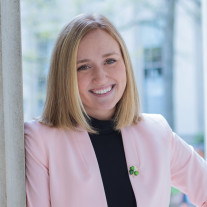Education and Training Series #101: Modelling UO2 Fission Gas Release (FGR) Thresholds in BISON
This webinar is part of a series hosted by the GIF Education and Training Working Group since 2016.
The link to register to this webinar can be found on this page under "about this webinar".
Who should attend?
Policymakers, industry professionals, regulators, researchers, students, the general public.
About the "GIF Education and Training" Webinars
These webinars, organised by the GIF Education and Training Working Group are streamed live monthly. The recordings and slide decks are accessible after the webinar on this website. These webinars cover a very broad range of technical and policy related topics. At the end of 2023 they have been viewed by more than 15000 people (approximately half of the views during the live streams and the other half views being of the archives on the public GIF website). In total, the GIF webinars have reached Generation IV enthusiasts, scientists, and engineers in more than 80 countries.
These webinars are organised and hosted by the GIF Education and Training Working Group (ETWG).
About this Webinar
Complete comprehension of fission gas release in nuclear fuel is essential for the design and operation of safe and cost-effective reactor fuel. In particular, it is essential to understand how reactor operating conditions influence the onset of fission gas release so that total fission gas release may be appropriately accounted for in cladding design and fuel safety qualification.
Current fission gas release threshold models fail to take into account pellet geometry and operating conditions like power and temperature, all of which considerably influence the threshold for release. This work lays the foundation for developing a revised threshold model for UO2 that removes dependencies by investigating the influence of various fission gas release parameters. Specifically, the results of a fission gas release sensitivity study will be presented to highlight the impact each parameter has on the threshold, as well as identify the differences between the empirical and mechanistic parameter correlations. Ultimately, the results of this study will provide insight into how best to present the three-dimensional threshold surface and how to apply this methodology to other ceramic fuel materials like pelletized UN and UC.
Dr. Patricia Paviet from PNNL, USA, member of GIF ETWG will facilitate this webinar.
Presentation of the webinar
Meet the presenter

Ms
Kaylee CUNNINGHAM
Ms. Kaylee Cunningham is a first year PhD student studying materials science at the University of Florida (UF) and a Graduate Research Assistant in the Materials Science Division at Los Alamos National Laboratory. She is currently a National Science Foundation Graduate Research Fellow. She holds a master’s degree in Nuclear Science and Engineering from the Massachusetts Institute of Technology and a bachelor’s degree from UF in Nuclear Engineering. Ms. Cunningham’s work is currently focused on engineering-scale computational modeling of ceramic nuclear fuel, though her experience includes transmission electron microscopy and transient grating spectroscopy analysis of fusion reactor structural materials, probabilistic risk assessment of reactor failures during environmental emergency scenarios, chemical synthesis of novel radiation shielding materials, and computational modeling of metallic actinide fuels. She is the 20204 1st Place American Nuclear Society (ANS) Pitch Your Thesis contest winner, and was also recently named a Thomson Reuters “Future Leader in Energy,” for her nuclear energy advocacy work via social media.